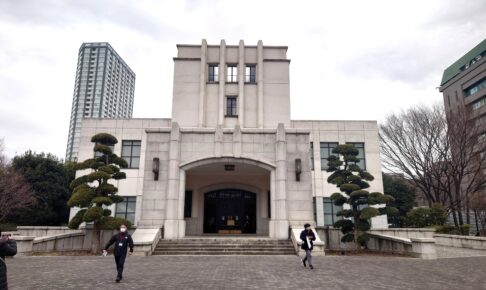Recommended for learning about the Siberian Internment Takeshi Tomita, "Siberian Internment" Summary and Comments
We present here "Siberian Internment" by Takeshi Tomita, published in 2016 by Chuokoron Shinsha.
Let's take a quick look at the book.
As a result of World War II, more than 4 million German, Japanese, and other generals and hundreds of thousands of civilians were interned in Soviet-controlled areas, including Soviet territory and North Korea, and forced to work under the guise of "compensation. This was the so-called Siberian internment. This inhumane system, modeled on the correctional labor camps that dealt mainly with political prisoners under the Stalinist dictatorship, has resulted in many tragedies. This book describes in detail the origins of the internment and the 10 years of internment suffered by German POWs and Japanese, and presents a complete picture. Winner of the Asia Pacific Prize Special Award.
AmazonProducts Page.
As a resident of Hokkaido, Russia is very close to my heart. There are people close to me who experienced Siberian internment, and there are also people who were brought up from Sakhalin and other places after the war.
However, although I knew that the Siberian internment was a tragic event, I did not know much about what it was really like.
In the process of learning about the war between Germany and the Soviet Union, I picked up this book because I wanted to learn about the Siberian internment that the Japanese also suffered.
The author describes the features of this book in the "Foreword" as follows. The book is a bit long, but I will quote it here as it succinctly describes the contents of the book.
This book is written with the aim of enriching the content of the book by repositioning "Siberian internment" as a common notion into a larger geographical spread and historical context, and by discussing it from multiple perspectives. The four key elements are as follows
First, the Soviet POW camps during World War II were modeled after the domestic correctional labor camps (for political and criminal offenders) and were established under the jurisdiction of the same Ministry of Internal Affairs and People's Commissariat (later the Ministry of the Interior). These two camps existed side by side from the middle of the war until Stalin's death. The internment of the Japanese was part of this huge "Gulag Archipelago" (Solzhenitsyn).
Second, the German and allied generals who were also prisoners of war. They numbered about 300,000, including more than 200,000 Germans. Not only did they outnumber the Japanese, but the rules and systems designed for them were applied to the Japanese POWs. Although there are no German POW researchers in Japan, our awareness was deepened when we invited Dr. Andreas Hilger from Germany to hold a panel and workshop in 2003.
Third, there is a lack of data on the internment of civilians in the "Soviet-controlled areas" of South Sakhalin and North Korea, which have rarely been mentioned. There, as in the Soviet Union, there were only a few POW camps surrounded by barbed wire and watchtowers at the four corners. However, in the sense that escape was impossible or difficult and freedom was greatly restricted, it was nothing less than internment.
Fourth, we will also discuss the Soviet internment in Mongolia, which has been conventionally treated as "Siberian internment. However, rather than directly linking Soviet policy and Japanese recollections, as has been the case in previous studies, the article incorporates the intermediate terms of republic, region, province, and gulag into the analysis to create a three-dimensional, realistic picture. As a case study, the author will focus on the Khabarovsk region, and will also refer to Mongolia (People's Republic of Mongolia), which has contrasting aspects in terms of POW management and camp administration. (omitted).
A large number of German and Japanese POWs who were declared "war criminals" were forced to work in correctional labor camps. Going back to the 1930s, it can be pointed out that Stalin's domestic repression and expansion of correctional labor camps in the 1930s was not simply born of dictatorial ambition, but was also based on the fear of war pitting Germany and Japan against each other.
We hope that this book will help readers understand from a world historical perspective that the Siberian internment was not a tragedy unique to the Japanese, but was part of the "Gulag Archipelago under Stalin's dictatorship" that afflicted tens of millions of people in Japan and abroad.
Chuokoron Shinsha, Takeshi Tomita, Siberian Internment, p. iiii-ⅴ.
A major characteristic of this book is that it looks at the Siberian internment not within the limited framework of "the Soviet Union and the Japanese," but as a Soviet policy that developed on a global scale.
We have written on this blog that the Soviet Union built a large number of camps (gulags) in the country, where huge numbers of people were interned and forced to work.The Island of Cannibalism: Stalin's Unknown Gulag - The reality of the Soviet Union's disastrous starvation policy in which cannibalism was rampant."We have introduced them in the following articles.
The book will explain that the Siberian internment was not intended for its victims, who were Soviet citizens, but for German and Japanese prisoners of war who were captured after World War II.
It also talks about the forced labor as human compensation for the tragic loss of life during the war between Germany and the Soviet Union.
The Siberian internment was not an issue unique to postwar Japan-Soviet relations, but a gigantic event that had emerged within the framework of the Soviet Stalinist regime and the Soviet-German war up to that point.
The term "Siberian internment" brings to mind the image of Japanese people being subjected to misery by the Soviet Union, but in this book we learn that the Soviet political system and the influence of the Russo-German War played a major role.
There are also several columns interspersed throughout the book, where recommended books are introduced to learn more about the Siberian internment. Novels and memoirs based on the harsh experiences are introduced, and the book is full of information that will be appreciated by those who want to learn more about the Siberian internment.
This book is highly recommended to get an overall picture of Siberian internment.
The above, "Takeshi Tomita, 'Siberian Internment': A History of Harsh Forced Labor by the Soviet Union in the Postwar Period."
Next Article.
Click here to read the previous article.
Related Articles







































